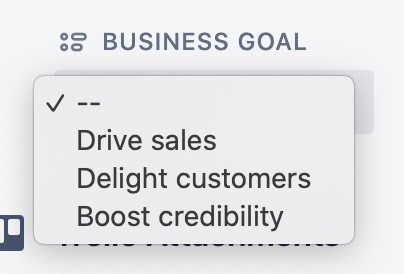You and your team are wrapping up your weekly meeting. As you’ve discussed all sorts of projects, goals, and incoming requests, people have been feverishly scribbling down their own notes and to-dos.
As everybody gets ready to head their separate ways, all are looking around with a panicked “Uhh…what now?” expression on their faces.
Every single team member has a mountain of work to plow through. And, as if those lengthy to-do lists weren’t already stressful enough, every last item seems important. Like “drop everything—this should’ve been done yesterday” sort of important.
It feels like there’s no natural starting point, and you and your team need some direction about what should be bumped to the top of your list.
Should you close your eyes and point at something? Throw a dart at a board? Forget any sort of order or strategy and just get started on anything?
Put the darts and blindfolds down. Here are some tactics that you and your team can use to effectively prioritize when everything is competing for your effort and energy. Ready, set, focus!
But Wait…Why Not Jump Right In?
When your task list is taunting you and deadlines are breathing down your neck, it can be tempting to throw caution to the wind and start tackling any random, smaller tasks.
At least you’re getting something—heck, anything—done that way. And isn’t that better than wasting time trying to come up with some sort of sensical order?
Not exactly—prioritization is important for a number of different reasons:
- Tackling High-Impact Activities: If your team decides to dive right into the work without a strategy, it’s human nature to start with the easy stuff—even if it’s not the most important. It all comes back to the task completion bias, which states that we go for the more painless tasks that make us feel like we’re being productive. That means that spreadsheet could get updated, but your team presentation (happening next week, ahh!) remains untouched. In contrast, prioritization helps you identify what matters most and start there.
- Accounting For Dependencies: Your team isn’t working alone. You likely need information and resources from other departments and people in order to get your work across the finish line, and waiting on those can often cause snags and delays. Prioritization helps you take those dependencies into account so you can make the most efficient use of your time, as opposed to hitting a bottleneck that stalls your progress.
- Avoiding Duplicate Efforts: If there’s no rhyme or reason to which tasks your team is starting with or who is handling what, you run the risk of having two people do the same thing. Prioritization ensures you aren’t duplicating your work, and it also means you can play to your team members’ strengths and communicate responsibility for each action item.
- Managing Expectations: There’s no hack or strategy in the world that will help you conquer an unmanageable workload (which is one of the most common sources of job stress, with 43% of survey respondents pointing a finger at their heavy workloads). Prioritization ensures realistic responsibilities and prevents burnout on your team. It also helps you manage the expectations of other departments or end clients by adjusting deadlines or project scope when necessary.
How To Find Your Starting Point When Everything Is A Hot Potato
You’re sold on the benefits of mapping out a strategy for what your team needs to focus on first. But it still begs the question: How do you know where to get started?
Rest assured—there isn’t one right way to do this. Here are a few different ways you and your team can make sense of your mile-long to-do list and start checking things off in an orderly, logical way.
1. Map Your To-Dos to Business Objectives
You and your team aren’t hustling for the sake of hustling—you want the work you’re doing to actually move the needle for the whole business.
That’s where this strategy comes into play. “Align team and project work with business objectives,” advises Alyssa Towns, a freelance writer and Business Operations Specialist at Adswerve. Take each task on your team’s to-do list and ask yourself: Which broader business goal does this task support? This is helpful for a few reasons:
- It’s easier to seek guidance from middle or upper management if you decide that’s necessary.
- You can focus on the work that’s the highest impact, rather than the work that’s the easiest to start with.
- It requires that you take a step back to realize if work is actually important, or if it only feels that way.
“If work doesn’t align with a current objective, we might throw it in the parking lot for a later date,” Towns adds.
Want to keep track of the business goal that each task supports? Try using the Custom Fields Power-Up in Trello. You can add a “Business Goal” field to each of your Trello cards, and then select from a dropdown to note which business objective that task relates to.
That way, you can use that as your touchstone for the broader focus—even when you’re elbow-deep in the nitty gritty work.

2. Rely On The Power Of The Matrix
No, not that Matrix. Rather, this is about using a Priority Matrix (often called an Eisenhower Matrix) to help you make sense of your to-do list.
Here’s how it works: Draw a square and then split it into four even quadrants. On the left side, label the boxes with “important” and “not important.” On the top, label the boxes with “urgent” and “not urgent.”
You’ll use this to categorize your work. Maybe that employee training session is both urgent and important, but archiving old job applications is neither urgent or important. Put those in the relevant boxes.
Keep doing that with each of your tasks. Once you have all of your work in the appropriate quadrant, use this as your guide:
- Urgent and Important: These are your highest priority. Put them at the top of your list!
- Urgent and Not Important: These can be delegated. If there’s nobody else to tackle them, they should be your next priority.
- Not Urgent and Important: Block some future time in your schedule to tackle these so you start making progress. These don’t need to be a core focus at this exact moment.
- Not Urgent and Not Important: These don’t even need to be on your to-do list right now. Get ‘em off of there!
This matrix is a simple way for you and your team to identify tiers of tasks and then act accordingly. It’s way more efficient and effective than picking to-dos at random.
3. Find Quick Team Wins
Wait…didn’t we say that you shouldn’t start with the easy stuff? Doesn’t that give you a false sense of productivity and throw you off track from your more important tasks?
That’s true—sometimes. But, like any rule, there are exceptions. That’s especially true when your team is dealing with a major case of overwhelm and burnout.
Studies show that work-related stress is directly correlated to fatigue. So, if you and your team are already dragging, it can be tough to muster up the gumption to tackle your most important and daunting projects right out of the gate.
If you think a sense of dread and defeat has overtaken your team, there’s some merit to starting with the low-hanging fruit. “If we’re on shaky grounds, [we’ll] get the quick wins first,” says Frank Pinto, VP of Engineering at Lendbuzz, noting that it helps them build momentum.
Once your team gets the satisfaction of completing some of those easier to-dos, the motivation-snowball will hopefully start rolling—and they’ll feel more and more motivated to sink their teeth into some of the meatier work that needs to be done.
4. Consider All Of The Factors
When it comes to sorting out our priorities, many of us have the tendency to look at one metric: the deadline. We’ll order things based on when they need to be done.
That approach has its time and place, but it fails to account for other important factors—from how much work a task involves to how prepared your team is to conquer it.
That’s why many managers zoom out to consider other aspects of the tasks that need to be completed. These can include:
- Impact: What impact will this task have on your business goals, team, or customers?
- Effort: How much work is involved in getting that task across the finish line? Is it hard or easy?
- Speed: How quickly can that task be accomplished?
- Confidence: How prepared is your team to tackle that task? Do they feel ready or are they intimidated by it?
Noelle McEntee, Marketing Lead at Catch.co, says evaluating every task through this same lens helps to ensure consistency as you prioritize—today, next week, and even next year.
Additionally, John Short, Founder of Compound Growth Marketing, says that rather than taking his best guess to answer those questions, he reviews data so that he’s grounding his assessment in reality.
These factors are another thing you can track in Trello. Create Labels to assign to cards so that you can easily spot if something is high-impact but low-effort, and so on.

You’re Going To Miss A Deadline—Now What?
You’ve evaluated and categorized and re-ordered. And yet you’re still hit with the realization that you can’t get it all done. At least, not in the original timeline. Even if you and your team worked around the clock, it’d take a miracle to conquer every item on your to-do list by the assigned deadline.
Now isn’t the time to lay your heads down on your desks (tempting, we know). Life happens, and you’re not the first person or team to need to push a due date.
The key here is clear and proactive communication. Together, identify the tasks that you’re going to fall short on and then reach out to the people or teams who will be affected by them.
Politely explain that your team is over-extended and you need to stretch the deadline. Set a revised date for the task, and then stick to it. Pushing deadlines should be the exception, and not the rule.
Get Through Stronger, Better, And As A Team
Even if it doesn’t feel like it right now, you’ll eventually get through all of those hot potatoes on your team’s plate. And when that happens? It’s time to take a good, hard look at the way you get your work done and make some improvements for the future. Moving forward, do you need to:
- Manage project scope more effectively?
- Set more realistic deadlines?
- Bring on more team members?
- Get access to more resources?
Those moments when you and your team are burdened with on-fire priorities aren’t just something to get through—they’re something to learn from.
So, once you’re through the thick of it, make sure you turn around and figure out how you can equip yourselves to do your best work. Do that and you and your team will check tasks off your to-do lists with more strategy and way less stress.







































